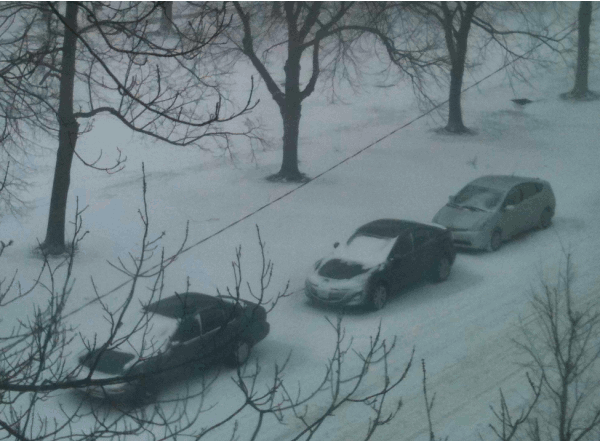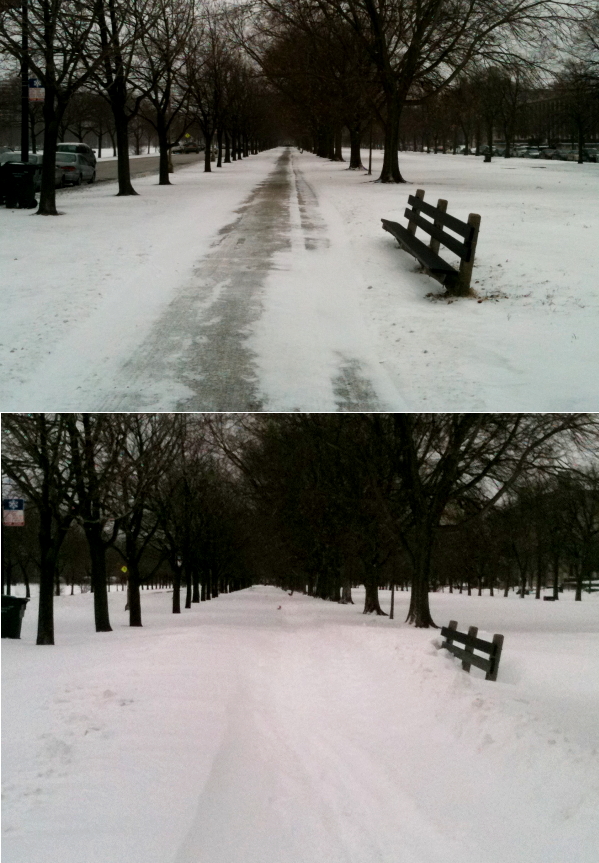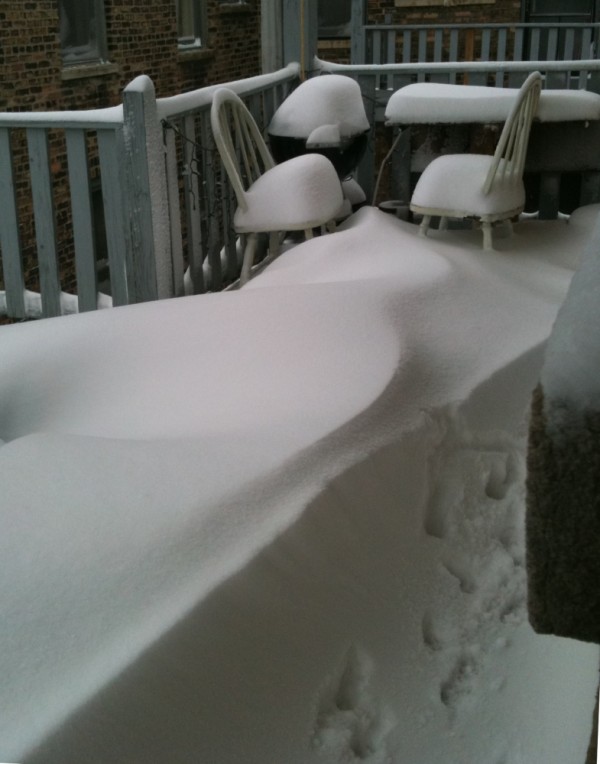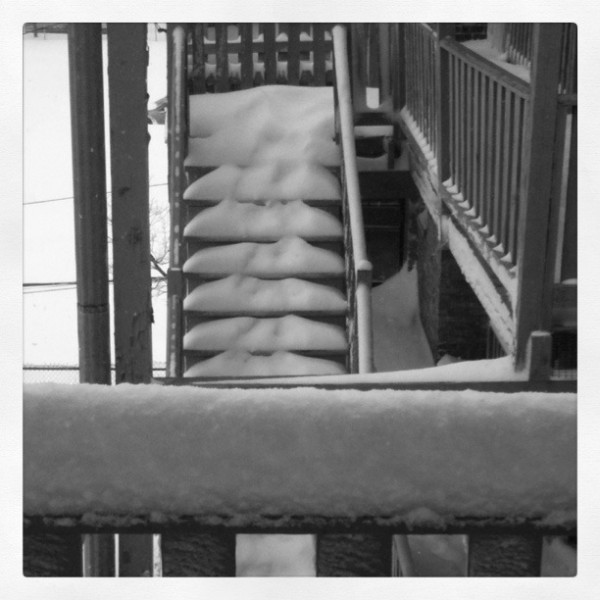![]() You might have heard that Chicago (along with much of the east and midwestern US) has had a bit of snow in the past couple of days.
You might have heard that Chicago (along with much of the east and midwestern US) has had a bit of snow in the past couple of days.
The blizzard that moved in on Tuesday afternoon was pretty intense – the snow was being whipped around so much that visibility was severely reduced, and it felt like sandpaper against when blown against your face. It was quite something to experience this in the middle of a major city – the only comparable experiences I’ve had have been at the top of Scottish or New Zealand mountains. As a measure of how strong the winds were, not only were they finding all of the gaps in the old window frames of my normally quite toasty warm flat, but they were also noticeably forcing moisture inside through them. Fortunately we managed to seal off the biggest gaps before snow started falling inside. Then, to add to the excitement, we got Thunder Snow!
Even after the storm finally moved on yesterday morning, we still got a few more inches of snow added by a burst of lake effect snow. The official grand total was 20.2 inches of snowfall – the third biggest storm in Chicago’s recorded weather history (see the top 10 at the end of this post). Of course, thanks to the wind, the actual distribution on the ground was quite uneven.

The road outside on (i) Tuesday evening, close to the start of the blizzard, (ii) Wednesday morning, (iii) Wednesday lunchtime, with added lake effect snow. Photos: Chris Rowan, 2011

Snow accumulation in the park across the street. Deep and crisp and... uneven? Photos: Chris Rowan, 2011
Whilst lots of snow had accumulated on the roadward side of the cars across from the flat, due to wind and snow plough, in the sheltered area on the kerbward side, some rather beautiful snow ventifacts had been carved out. (quite convenient, too, for those of us faced with the task of shovelling the snow away).

Aeolian snow-forms produced In the wind-shadows of the cars across the street. Photo: Chris Rowan, 2011.
Chicago, despite having much more infrastructure in place to deal with snowstorms, has been completely overwhelmed by this monster snowfall. Schools are shut, and the University of Chicago cancelled classes for the first time in more than 25 years. They’re cancelled today as well – not because of continuing snow fall, but because the snow ploughs have been so occupied trying to clear the main thoroughfares (such as Lake Shore Drive) that they haven’t had time to get to the smaller streets yet.
This has me thinking about the limits of resilience to extreme weather events. Chicago is well-prepared for snowy weather – it has to be, because significant winter snowfall is hardly a rare occurrence. For this reason, it chugs along happily in conditions that would make most places in my British homeland grind to a standstill. And yet, despite this, a sufficiently severe winter storm can still shut things down in pretty short order. Even the most forward-thinking of cities don’t tend to prepare for the worst disaster that could possibly hit them – it would cost too much (or, at least, more than the average tax-payer would accept) to prepare for something that happened one in a generation or more. It seems more sensible to accept that a blizzard will shut down your city once every couple of decades, than paying for a fleet of snow ploughs that mostly stands idle for 20 years.
But this calculation is only valid, or even possible, when the long term climate is stable. If the climate changes, as we are changing it now, then the previously rare events, or even never-before-seen ones, become more common; we will be more frequently afflicted by extreme weather that we are not equipped to cope with. It is hard to plan for the future when we are constantly moving the goalposts on ourselves. And if that is true of rich, developed cities like Chicago, then what of cities in the developing world, where the threshold of what they can deal with now, and what they can afford to prepare for in the future, is much lower?







Comments (4)
Links (2)-
-
Pingback: Stuff we linked to on Twitter last week | Highly Allochthonous
Pingback: When snow doesn’t melt away like snow | Highly Allochthonous